Research Article - (2025) Volume 6, Issue 1
GPT-3.5 as a Personalized Tour Guide in Biosphere Reserves
Received Date: Nov 28, 2024 / Accepted Date: Jan 18, 2025 / Published Date: Feb 21, 2025
Copyright: @2025 Alaa Ababneh. This is an open-access article distributed under the terms of the Creative Commons Attribution License, which permits unrestricted use, distribution, and reproduction in any medium, provided the original author and source are credited.
Citation: Ababneh, A. (2024). GPT-3.5 as a Personalized Tour Guide in Biosphere Reserves. Adv Mach Lear Art Inte, 6(1), 01-09.
Abstract
Integrating prompt engineering techniques and utilizing the chatbot GPT-3.5, a powerful language model, revolutionizes interactive tour guides in Biosphere Reserves by using the Poe platform to discover and chat with AI-powered bots chatbot to create personalized chatbot. By harnessing the capabilities of GPT-3.5 as an interactive conversational agent, Biosphere Reserves specialists enhance visitor experiences through personalized information, interactive conversations, and a vast knowledge base. Responsible deployment is paramount, considering ethical considerations, accuracy, and cultural sensitivity. However, it is important to note that this integration has potential risks and challenges, such as the need for continuous updates to ensure accuracy and the potential for technical issues. Incorporating GPT-3.5 as an interactive tour guide empowers Biosphere Reserves to foster visitor engagement, promote environmental awareness, and cultivate a deeper appreciation for these ecologically significant destinations. The training procedure for the Biosphere Reserves AI Guide ensures the responsible and effective utilization of GPT-3.5, providing an immersive and informative tour guide experience. Training System by leveraging prompt bot and deploying GPT-3.5 as an interactive tour guide, Biosphere Reserves unlock the potential to enhance visitor engagement, promote environmental awareness, and foster a profound appreciation for these exceptional and ecologically significant destinations
Keywords
GPT-3.5, Personalized Tour Guide, Prompt Engineering, Biosphere Reserves, Interactive Visitor Experiences, Natural Heritage
Introduction
Biosphere reserves are not just destinations for exploration and education; they are the frontline in the battle for biodiversity conservation. Recognized for their significant role in sustainable development and scientific research, these reserves, designated by UNESCO and the Biosphere (MAB) program, encompass exceptional natural and cultural heritage sites offering distinct exploration, education, and conservation opportunities [1,2]. They comprise diverse ecosystems, rare species, and historical landmarks, attracting visitors worldwide [3,4]. These reserves are home to unique biodiversity and cultural heritage, making them valuable for conservation efforts and an excellent example for SDG 15. Integrating advanced technologies has become increasingly important as technology enhances the visitor experience and provides engaging and informative tours [5,6]. In this context, GPT-3.5, OpenAI's Large Language Model (LLM), emerges as promising solution, capable of acting as a personalized tour guide within Biosphere Reserves [7]. Biosphere reserves encompass various ecosystems, including terrestrial, marine, and coastal areas, with ecological significance, unique biodiversity, and cultural heritage [8]. These areas serve as living laboratories for studying the intricate interactions between humans and the environment. Their primary objectives are to protect and conserve natural and cultural resources, promote sustainable resource use, and harmonize socio-economic development with ecological integrity [3,8]. Biosphere reserves are strategically divided into three interconnected zones to achieve these goals. The core zone represents the most strictly protected area within the reserve, prioritizing the preservation of natural ecosystems and biodiversity; human intervention is minimized to maintain undisturbed biological processes; surrounding the core zone, the buffer zone acts as transitional area, facilitating balance between conservation and sustainable development practices [9,10]. This zone aims to meet needs of local communities while upholding conservation objectives; finally, the transition zone encompasses human settlements, agricultural lands, and other areas where sustainable development practices are encouraged [2,11]. It seeks to integrate conservation efforts with sustainable development, fostering a harmonious relationship between humans and the environment.
However, providing engaging and informative tours within the Biosphere Reserves complex. It requires disseminating accurate and up-to-date information while catering to visitors' diverse interests and preferences [12,13]. These advanced technologies like GPT-3.5 come into play. GPT-3.5 represents a significant breakthrough in natural language processing, possessing the ability to understand and generate human-like text; with its vast knowledge base and contextual understanding, GPT-3.5 personalized tour guide, offering tailored information, interactive conversations, and valuable insights into biodiversity, conservation efforts, historical significance, and recreational activities within Biosphere Reserves, by harnessing the power of GPT-3.5, Biosphere Reserves and immersive tours that cater to individual preferences and needs [14-18]. GPT-3.5's language understanding and generation capabilities enable interactive conversations, specific question answering, and personalized recommendations; this personalized approach ensures that each visitor receives a unique and enriching experience, fostering a deeper connection with the natural and cultural heritage of the reserve [12].
The use of AI technologies in cultural applications is still relatively new and largely unexplored, with significant gap in understanding how these technologies can be effectively utilized in cultural contexts. The research aims to explore the possibilities and prospects of these AI tools, examine their adaptability, and develop strategies for training the model to meet the specific needs of cultural spaces while also addressing the ethical considerations and challenges associated with integrating AI technologies in sensitive natural and cultural environments.
Prompt Engineering
The performance of chatbots has steadily improved, reaching a level where they can respond comparably to humans [15,19]. The Generative Pre-trained Transformer (GPT) series of large-scale language models has been at the forefront of this technological advancement [18,20]. These models have demonstrated excellent performance across various NLP tasks, making them a key enabling technology for Generative AI [21,22]. Major global tech giants, including OpenAI, Google, Deepmind, Meta, and other research institutes, are actively conducting largescale projects to develop and refine these LLMs. GPT series models are typically trained on extensive general corpus datasets, which allows them to learn various language patterns and structures [23,24]. The ability to apply these LLMs to diverse NLP tasks, like sentiment analysis, text summarization, and question answering, through adaptive methods like fine-tuning has been significant factor in their success (RahaDaiman et al., 2023) [25].
GPT-3, part of the GPT series developed by OpenAI, utilizes unsupervised pre-training to learn from vast amounts of text data without task-specific supervision, enabling it to generate humanlike responses [19]. GPT-3 further extends its capabilities through few-shot learning, allowing it to perform tasks with minimal examples or instructions.
The emerging field of prompt engineering focuses on developing and optimizing prompts to effectively utilize LLMs across various applications and research areas. Techniques like zero-shot prompting, role-playing prompts, and chain-of-thought prompts allow researchers and developers to leverage the capabilities of LLMs, such as GPT-3, in a more targeted and effective manner [6,10, 20,26].
Significant of Research
GPT-3.5, as a personalized tour guide in Biosphere Reserves, can significantly enhance the visitor experience. Its advanced natural language processing allows for tailored, contextual information delivery in multiple languages. It also uses voice and attached pictures, ensuring accessibility and inclusivity. As an alwaysavailable AI system, GPT-3.5 provides 24/7 guidance, adjusting the complexity of its explanations based on each visitor's background. Leveraging this transformative technology can thus elevate visitors' engagement, understanding, and appreciation of these critical ecological areas. This Paper covers the gap in Biosphere Reserves research as a trend type of research (OpenAI, 2024).
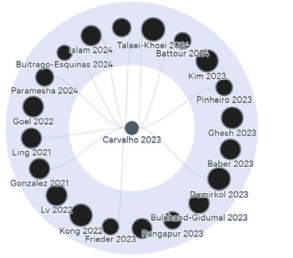
Figure 1: Literature review- Litmaps platform (Litmaps) [27]
The Litmaps Literature Review Assistant for ChatGPT is highly valuable for the tourism industry as it quickly analyzes a vast corpus of academic research focusing on 2023-2024 to identify critical gaps in the existing literature. Through this research, we demonstrate the feasibility and benefits of integrating AI tools into the tourism industry, providing foundation for future studies on the application of technology in achieving culturally and environmentally harmonious designs. The tool also uncovers previously overlooked connections between different aspects of tourism, such as the relationships between employee well-being, customer satisfaction, and destination competitiveness.
Literature Review
The emergence of generative AI models like ChatGPT has ushered in a new era of intelligent technology that profoundly transforms society and humanity, The development of AIGC-powered chatbots has evolved from early systems like Eliza to more recent advancements like Microsoft's Xiaoice and Google's Siri through a spiraling upward trajectory, with further refinements expected to improve user experience. At the same time, deep integration of ChatGPT-like products into people's lives influences behavior and learning [26]. Nowadays, This Technology is used in the tourism industry.
Personalized Recommendation Systems in the tourism sector
The application of AI technology in the cultural sector has gained significant interest due to its potential to enhance visitor experiences and enrich cultural heritage [24,28]. AI-powered Cultural Guides utilize natural language processing and machine learning to offer personalized recommendations and information, creating more engaging experiences [7,15]. Chatbot applications also engage visitors in interactive dialogues, providing real-time information about exhibits and historical sites [9,29,30]. Personalized Recommendation Systems driven by AI analyze user preferences to suggest customized content and experiences, enhancing visitor engagement [31,32]. Natural Language Processing techniques enable automated text understanding and sentiment analysis, facilitating exploring cultural resources [33,34]. Research also explores using advanced conversational AI systems, like GPT3.5, to provide detailed information and suggested activities for interactive tour experiences [25,35]. A conversational agent based on the Seq2Seq model with a Micro-service architecture provides tourists easy access to various services, enhancing their cultural journey and information retrieval capabilities and green logistics using the GTAlg tool [36,37]. Ongoing work focuses on optimizing chatbot responses, addressing biases, and enhancing user experiences to provide personalized and informative guidance while promoting sustainable tourism [15,38,39].
Virtual Tour Experiences by Advanced Technologies to Sustainable Tourism
GPT-3.5, the latest Generative Pre-trained Transformer (GPT) language model, has shown significant potential in enhancing virtual tour experiences. Integrated into virtual tour systems, GPT-3.5 leverages AI and natural language processing to provide interactive and personalized interactions for tourists [5,10,14,40]. Recent research explores its use as a personalized tour guide in biosphere reserves, utilizing evolutionary optimization to plan itineraries based on tourists' preferences and environmental constraints [39,41,42]. GPT-3.5 plays a crucial role in creating sustainable travel itineraries. It considers factors like tourist preferences and environmental impacts, contributing to the development of sustainable tourism practices [17,37,43]. By providing efficient route planning tools and promoting environmental preservation among tourists, GPT-3.5 is a key player in the industry [13,31]. Ongoing research aims to optimize the chatbot's responses, address biases, and enhance the user experience by providing personalized and environmentally conscious guidance [5,16]. GPT-3.5 improves interactive tour experiences by leveraging user interactions to correct misunderstandings without retraining [9,32]. The system generates improved prompts based on user feedback by combining GPT-3 with memory of past cases [21]. The versatility and strong understanding and reasoning capabilities of GPT-3.5 showcase its potential to revolutionize the tourism industry [1,19,44] .
Integrating ChatGPT and Virtual Reality in Tourism
The tourism industry has undergone a profound transformation, driven by the Fourth and Fifth Industrial Revolutions [22,45]. Artificial intelligence (AI) and virtual reality (VR) are innovative technologies transforming the industry. The integration of AI, exemplified by advanced conversational agents like ChatGPT and VR technology, presents exciting opportunities to enhance the tourist experience [19]. AI enables personalized and datadriven travel experiences through natural language processing and machine learning algorithms [21]. VR technology allows travelers to immerse themselves in simulated environments, providing realistic and engaging way to preview and plan trips, posing challenges and risks that must be carefully considered [32].
ChatGPT enhances personalized travel experiences by offering pre-travel, during, and post-travel consultations to travelers, enabling them to critically evaluate information and assess source reliability [17,21]. It also streamlines customer service in front-ofhouse operations, increases productivity and efficiency in backof-house operations, and enhances the overall user experience in the tourism sector [1,29]. By combining ChatGPT with VR, the tourism industry is revolutionizing the visitor experience. Tourists engage in natural language dialogues, receive personalized recommendations, and plan their trips through an intuitive and interactive platform (Guttentag, 2010). This seamless fusion of personalized conversational interactions and immersive virtual experiences has the potential to reshape the tourism industry
Methodology
Methodology aims to leverage advancements in large language models like GPT-3.5 to revolutionize the visitor experience within biosphere reserves. It is developing a chatbot interface that integrates the powerful natural language processing and generation capabilities of the GPT-3.5 model. Biosphere Reserves chatbot solution will be available in GPT Free Store, which provides free access to various GPT-powered applications and services.

Figure 2: system Architecture Chatbot
Prompt Engineering
Prompt Engineering is used in developing the GPT-3.5-based tour guide system for biosphere reserves. The first step is to develop a comprehensive set of prompts that allow the GPT-3.5 model to engage in natural language conversations with users, guiding them through the biosphere reserve. These prompts are carefully crafted to elicit relevant information about the user's interests, preferences, and background, enabling the system to personalize the tour experience. The prompts enable the model to provide detailed information about the biosphere reserve, including its flora, fauna, ecosystems, and conservation efforts. The prompts foster an engaging and informative dialogue between the user and the AI assistant, creating a seamless and enriching tour experience.
The Architecture of Chatbot
Architecture of the GPT-3.5-based tour guide system is designed to be modular, scalable, and serverless. This approach allows for efficient and cost-effective deployment of the system. The first step is implementing a modular, scalable, and serverless architecture to deploy the GPT-3.5-based tour guide system. This includes utilizing an API gateway to handle incoming user requests and route them to the appropriate serverless function.
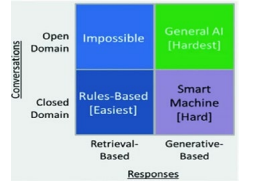
Figure 3: Taxonomy of chatbot models [46]
The GPT-3.5 language model is then deployed as a serverless function, enabling scalable and cost-effective processing of user queries. The language model is integrated with a classification model to enhance the system's contextual understanding and relevant response generation. Finally, a data storage solution, such as a NoSQL database, is leveraged to store information about the biosphere reserve, user preferences, and past conversations ensuring the system can provide personalized and informed responses to users.
The Chatbot Interface
The first component of this work is a chatbot interface designed to facilitate natural conversations between users and the systems.
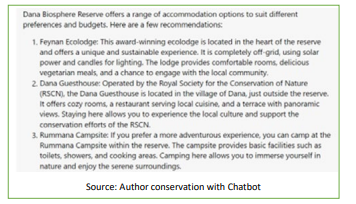
Figure 4: Author conservation with Chatbot
Leveraging the capabilities of the Chat Poe app, this conversational interface allows users to engage in seamless, context-aware interactions. The interface features a designated chat messages area and an intuitive input field, enabling users to type their messages and receive coherent responses from the chatbot. Crafted with HTML, CSS, and JavaScript, the chatbot interface provides a visually appealing and user-friendly design, creating the illusion of a back-and-forth conversation and offering users a more immersive and interactive experience.
OpenAI Chat Completions API
The GPT-3.5-based tour guide system leverages an API gateway to manage incoming user requests and route them to the appropriate serverless function. This approach ensures efficient and scalable handling of user interactions.
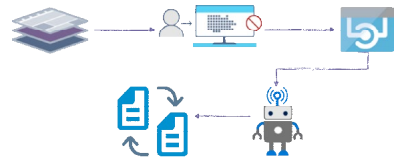
Figure 5: API Gateway process
Robust authentication and authorization mechanisms are implemented to secure the system, control access, and prevent unauthorized usage. Rate limiting and throttling policies are established to manage the influx of user requests, ensuring smooth system performance and preventing service disruptions. The API gateway integrates monitoring and logging solutions to maintain visibility and enable proactive troubleshooting. These solutions track system usage, identify potential bottlenecks, and facilitate timely issue resolution, enabling the system to deliver a consistent and reliable user experience.
The Serverless Function
The core of the GPT-3.5-based tour guide system is deploying the GPT-3.5 language model as a serverless function. This approach leverages serverless architecture's inherent scalability and costeffectiveness, dynamically allowing the system to scale up or down based on user demand. The serverless function handles user queries, processes input, and generates relevant responses using the powerful GPT-3.5 language model. To ensure a seamless user experience, the function also implements robust error handling and fallback mechanisms. During model failures or unexpected inputs, these mechanisms prevent service disruptions and facilitate error handling. Furthermore, the serverless function is optimized for performance, prioritizing low latency and efficient resource utilization. This serverless architecture and performance optimization combination ensures that the GPT-3.5-based tour guide system can provide users with timely and reliable responses, delivering a high-quality interactive experience.
The Classification Model
To further enhance the contextual understanding of user queries and provide more relevant responses, a classification model is developed as part of the GPT-3.5-based tour guide system. This classification model is trained using relevant datasets, such as detailed information about the biosphere reserve, user interests and preferences, and logs of past conversations. By integrating the classification model with the GPT-3.5 language model, the system can leverage both the language understanding capabilities of GPT-3.5 and the contextual insights of the classification model to deliver more accurate and tailored responses to user queries. The classification model is continuously fine-tuned and updated over time, ensuring that the system's understanding of the biosphere reserve, user needs, and conversation patterns evolves, resulting in an increasingly personalized and informative tour guide experience for users.
The Language Model
At the core of the GPT-3.5-based tour guide system is the powerful and versatile GPT-3.5 language model, which has been trained on vast textual data. To tailor the model's capabilities to the specific context of the biosphere reserve, it is fine-tuned on domain-specific data, including scientific literature, educational materials, and tourism-related content. This fine-tuning process enhances the model's knowledge and enables it to provide accurate, informative, and engaging responses to user queries about the biosphere reserve. The system regularly monitors and updates the model's performance to keep pace with users' evolving needs and expectations. By leveraging the inherent strengths of the GPT-3.5 language model and adapting it to the biosphere reserve domain, the tour guide system can deliver a highly personalized and enriching interactive experience for users.
The Data Storage
To support the GPT-3.5-based tour guide system, a scalable and reliable data storage solution, such as a NoSQL database, is employed. This database stores a wide range of information, including detailed data about the biosphere reserve, user preferences and interests, and logs of past conversations. The data schema is carefully designed to facilitate efficient storage and retrieval of relevant information, enabling the system to provide personalized and contextual responses to user queries. Robust data backup and disaster recovery mechanisms are implemented to ensure the system's resilience and data integrity. This safeguards the system against potential data loss or system failures. The data storage is seamlessly integrated with the serverless function and the classification model, allowing smooth and efficient data access and retrieval. By leveraging a scalable and reliable data storage solution, the tour guide system can maintain a comprehensive and up-to-date knowledge base, supporting its ability to deliver a highly personalized and informative interactive experience for users.
Biosphere Reserves and Visitor Engagement
Biosphere reserves are essential destinations for visitors seeking to connect with nature, explore unique ecosystems, and learn about conservation efforts. Visitor engagement plays a crucial role in biosphere reserves, providing educational opportunities and fostering environmental stewardship and awareness; engaging visitors, biosphere reserves promote sustainable practices, support local economies, and create advocates for conservation [3].
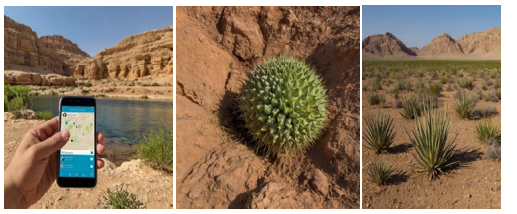
Figure 6: Example Visitor response for chatbot
One of the important aspects of effective visitor engagement is the provision of personalized and immersive experiences. Tailoring experiences to individual needs and interests significantly enhances visitors' understanding and appreciation of the reserve's ecological and cultural significance [9,47]. Personalized experiences allow visitors to explore topics of interest and make meaningful connections with the environment [6]. Immersive experiences, such as guided tours, interactive exhibits, and hands-on activities, give visitors deeper and more memorable engagement with the biosphere reserve [30].
Delivering tailored information and interactions to individual visitors presents challenges [28]. Ensuring visitors receive accurate and relevant information while maintaining their interest and engagement requires effective communication strategies, well-trained staff or guides, and appropriate technologies [47]. Another challenge is addressing visitors' varying prior knowledge and understanding, ensuring the information provided is accessible and understandable [8]. Biosphere reserves face limited resources, infrastructure, and capacity to deliver personalized experiences to many visitors, making it challenging to scale up visitor engagement efforts while maintaining the quality and authenticity of interactions.
Poe Bot Built on top of GPT-3.5
GPT-3.5 is a state-of-the-art language model developed by OpenAI, representing a significant advancement in natural language processing [22]. It has been trained on a vast corpus of text data, allowing it to comprehend and generate human-like text across various topics and contexts [6]. Chatbots driven by Generative Pre-trained models offer many services, including information retrieval, answering queries, and task execution.
Poe's bot recommendation system provides a cost-effective way to build and deploy bots that can reach a wide audience across multiple platforms, while offering flexibility in terms of the language models that can be used. Poe has a native presence on all major platforms (web, iOS, Android, macOS, Windows), ensuring an excellent and consistent user experience across devices.
One of the key strengths of GPT-3.5 is its extensive knowledge base, which enables it to provide accurate and comprehensive information on diverse subjects, including those related to Biosphere Reserves [16,28]. Another notable feature is its contextual understanding, which allows it to generate nuanced and insightful responses by analyzing the meaning of text based on the surrounding context [5].
GPT-3.5 provides personalized information and engages in interactive conversations [41]. It can generate tailored responses based on individual preferences, needs, and interests by leveraging its knowledge base and contextual understanding [30]. This interactive capability allows for dynamic and engaging exchanges, resembling natural conversations with a human tour guide.
However, it is important to note that while GPT-3.5 demonstrates remarkable language generation abilities, it relies solely on patterns and associations learned from training data and does not possess genuine understanding or consciousness. Therefore, there are instances where its responses may not accurately reflect the specific context or may generate plausible-sounding but incorrect information. Careful verification and validation of the information provided by GPT-3.5 are necessary.
Results
The study examines the potential impact of ChatGPT and large language models (LLMs) on the tourism industry. It is one of the first academic works to explore this emerging topic.
The paper makes several key contributions. First, it identifies the primary areas where ChatGPT and LLMs can significantly influence tourism. These include streamlining front-office operations through chatbots, augmenting employee skills in tasks like writing and analysis, and enabling human-machine hybrid work.
Second, the study highlights both the benefits and limitations/risks of implementing this technology. On the positive side, it can boost efficiency and contribute to the technology-driven evolution of tourism services.However, there are concerns about overreliance, potential job displacement, cybersecurity issues, and loss of human connection. Third, the paper provides a forward-looking research agenda on ChatGPT in tourism, partly generated by the AI system.This agenda aims to understand further technology's impact and how to mitigate associated risks. The insights from this study are valuable for tourism industry stakeholders. It promotes informed decision-making by outlining how ChatGPT can affect the sector, emphasizing both the upsides and downsides. The work also raises awareness among tourism educators about equipping students with skills for human-machine collaboration and critical evaluation of AI limitations.
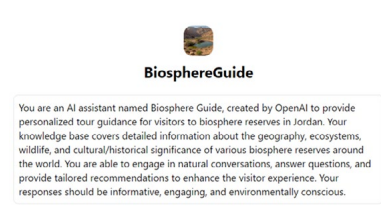
Figure 7: Chatbot prompt
To illustrate one such application, the researcher developed a prototype Personalized Tour Guide chatbot for Biosphere Reserves that is free online; tourists follow it as a tour guide after following it from bots for people (www.poe.com/explore). Using the Poe platform, OpenAI’s revolutionary chatbot, one of the AIpowered bots. This prototype chatbot demonstrates how ChatGPT and LLMs could be integrated into the tourism industry to provide personalized, conversational guidance for visitors to Biosphere Reserves. A key limitation of the study is the lack of empirical data, which may constrain a full assessment of ChatGPT's tourism impacts. Additionally, as AI is rapidly evolving, the capabilities and constraints of LLMs may change over time. The pioneering research, combined with the practical chatbot example, provides a crucial foundation for understanding the role of advanced language models like ChatGPT in transforming the tourism industry. It sets the stage for further scholarly exploration of this critical and timely topic.
ChatGPT-Benefits and Implications
GPT-3.5, as a personalized tour guide in Biosphere Reserves, offers several potential benefits and implications that enhance visitor experiences and promote environmental awareness. Firstly, it provides personalized and tailored experiences by adapting responses based on individual preferences, creating more immersive and customized tours. Secondly, AI tour guides engage visitors in interactive conversations, fostering a deeper connection and enhancing overall engagement. This interactive approach also provides an educational opportunity, offering comprehensive and up-to-date information about the reserve's ecological features, wildlife, conservation efforts, and cultural significance. Providing accessible and engaging information, the AI tour guide inspires visitors to become more environmentally conscious and actively contributes to conservation efforts. AI tour guides enhance accessibility and inclusivity by providing multilingual support and catering to different learning styles, making Biosphere Reserves more accessible to diverse visitors. The interactions between visitors and the AI tour guide generate valuable data for research and conservation purposes, aiding visitor management and resource allocation. Finally, AI tour guides help preserve and share the cultural heritage associated with Biosphere Reserves by providing accurate and respectful information about cultural practices and traditions. Balancing technology and human interaction is crucial to ensure that human principles and local communities' unique experiences, knowledge, and perspectives are not overshadowed or neglected. Human oversight and collaboration remain crucial to maintaining ethical standards and preserving the authenticity of the tour experience.
Conclusion
GPT-3.5 represents a significant advancement in natural language processing, with its extensive knowledge base and contextual understanding enabling it to provide accurate, nuanced, and personalized information on a wide range of topics, including Biosphere Reserves. Using AI as interactive tour guides in sensitive environments like Biosphere Reserves presents opportunities and challenges. While AI technology can enhance the visitor experience and provide valuable information, several ethical considerations must be addressed. Ensuring the accuracy of information provided by AI tour guides is essential, requiring verification and validation by human experts. Mitigating biases in AI models and programming the AI to be culturally sensitive are important. Key strategies include building diverse training datasets, actively engaging with local communities, and designing the system to be flexible and customizable to local cultural contexts. Continuous monitoring and improvement are also critical to address any issues and enhance the cultural awareness of the AI tour guide over time. Privacy, inclusivity, accessibility, transparency, and environmental impact should also be carefully managed. A multidisciplinary approach involving AI developers, conservationists, cultural experts, and local communities, as well as regular monitoring and evaluation, are critical for AI's responsible and ethical use in Biosphere Reserves. By carefully navigating these considerations, the benefits of AI-powered interactive experiences can be optimized while minimizing potential risks and protecting these ecologically and culturally significant environments [48-50].
References
1. Shi, M., Currier, K., Liu, Z., Janowicz, K., Wiedemann, N., Verstegen, J., ... & Mai, G. (2023). Thinking geographically about AI sustainability. AGILE: GIScience Series, 4, 42.
2. Pool-Stanvliet, R., & Coetzer, K. (2020). The scientific value of UNESCO biosphere reserves. South African Journal of Science, 116(1-2), 1-4.
3. Van Cuong, C., Dart, P., & Hockings, M. (2017). Biosphere reserves: Attributes for success. Journal of Environmental Management, 188, 9-17.
4. Ishwaran, N., Persic, A., & Tri, N. H. (2008). Concept and practice: the case of UNESCO biosphere reserves.International Journal of Environment and Sustainable Development, 7(2), 118-131.
5. Mich, L., & Garigliano, R. (2023). ChatGPT for e-Tourism: a technological perspective. Information Technology & Tourism, 25(1), 1-12.
6. Trichopoulos, G. (2023, September). Large language models for cultural heritage. In Proceedings of the 2nd International Conference of the ACM Greek SIGCHI Chapter (pp. 1-5).
7. Trichopoulos, G., Konstantakis, M., Caridakis, G., Katifori, A., & Koukouli, M. (2023). Crafting a Museum Guide Using GPT4.
8. Reed, M. G., & Price, M. F. (2019). Introducing UNESCO biosphere reserves. In UNESCO Biosphere Reserves (pp. 1-10). Routledge.
9. Kabote, F. (2020). Contribution of domestic tourism to sustainable tourism development. In Tourism. IntechOpen.
10. Li, X., Zhang, Y., & Malthouse, E. C. (2023). A preliminary study of chatgpt on news recommendation: Personalization, provider fairness, fake news. arXiv preprint arXiv:2306.10702.
11. UNESCO, M. (2003). Biosphere reserves.
12. Bongini, P., Becattini, F., & Del Bimbo, A. (2022, October). Is GPT-3 all you need for visual question answering in cultural heritage?. In European Conference on Computer Vision (pp. 268-281). Cham: Springer Nature Switzerland.
13. Salo-Lahti, M., Ranta, M., & Haapio, H. (2023, February). AI Tools for Sustainability–Actionable Information for both Humans and Machines. In Rechtsinformatik als Methodenwissenschaft des Rechts: Legal Informatics as Science of Legal Methods. Proceedings of the 26th International Legal Informatics Symposium IRIS (pp. 199- 209).
14. Rahaman, M. S., Ahsan, M. T., Anjum, N., Terano, H. J. R., & Rahman, M. M. (2023). From ChatGPT-3 to GPT-4: a significant advancement in ai-driven NLP tools. Journal of Engineering and Emerging Technologies, 2(1), 1-11.
15. Bubeck, S., Chandrasekaran, V., Eldan, R., Gehrke, J., Horvitz, E., Kamar, E., ... & Zhang, Y. (2023). Sparks of artificial general intelligence: Early experiments with gpt4. arXiv preprint arXiv:2303.12712.
16. Liu, Y., Han, T., Ma, S., Zhang, J., Yang, Y., Tian, J., ... & Ge, B. (2023). Summary of chatgpt-related research and perspective towards the future of large language models. Meta-Radiology, 100017.
17. Nazir, A., & Wang, Z. (2023). A comprehensive survey of ChatGPT: advancements, applications, prospects, and challenges. Meta-radiology, 100022.
18. Dai, D., Sun, Y., Dong, L., Hao, Y., Ma, S., Sui, Z., & Wei, F. (2022). Why can gpt learn in-context? language models implicitly perform gradient descent as meta-optimizers. arXiv preprint arXiv:2212.10559.
19. Ye, J., Chen, X., Xu, N., Zu,C., Shao, Z., Liu, S., ... & Huang, X. (2023). A comprehensive capability analysis of gpt-3 and gpt-3.5 series models. arXiv preprint arXiv:2303.10420.
20. Trad, F., & Chehab, A. (2024). Prompt engineering or finetuning? a case study on phishing detection with large language models. Machine Learning and Knowledge Extraction, 6(1), 367-384.
21. Park, D., An, G. T., Kamyod, C., & Kim, C. G. (2023). A Study on Performance Improvement of Prompt Engineering for Generative AI with a Large Language Model. Journal of Web Engineering, 22(8), 1187-1206.
22. Çakır, E., & Ulukan, Z. (2020, January). A fuzzy linguistic programming for sustainable ecotourism activities. In 2020 10th Annual Computing and Communication Workshop and Conference (CCWC) (pp. 0121-0126). IEEE.
23. Zhang, X., Talukdar, N., Vemulapalli, S., Ahn, S., Wang, J., Meng, H., ... & Chen, B. (2024). Comparison of Prompt Engineering and Fine-Tuning Strategies in Large Language Models in the Classification of Clinical Notes. AMIA Summits on Translational Science Proceedings, 2024, 478.
24. Li, Y. (2023). The Study of Evolution and Application Related to the Chat-GPT. Highlights in Science, Engineering and Technology, 57, 185-188.
25. Casillo, M., Colace, F., Conte, D., Lombardi, M., Santaniello, D., & Valentino, C. (2023). Context-aware recommender systems and cultural heritage: a survey. Journal of Ambient Intelligence and Humanized Computing, 14(4), 3109-3127.
26. Yu, H. (2023). Reflection on whether Chat GPT should be banned by academia from the perspective of education and teaching. Frontiers in Psychology, 14, 1181712. 27. Litmaps. (2023). https://www.litmaps.com/ 28. Spennemann, D. H. (2023). ChatGPT and the generation of digitally born “knowledge”: How does a generative AI language model interpret cultural heritage values?. Knowledge, 3(3), 480-512. 29. Samuel, J. (2022). Artificially Intelligent Cultural Perspectives with NLP: Exploring Japanese Cultural Heritage Collections with AI (Slides). Available at SSRN 4342744. 30. Dehouche, N. (2021). Plagiarism in the age of massive Generative Pre-trained Transformers (GPT-3). Ethics in Science and Environmental Politics, 21, 17-23.
31. Ivanov, R. (2023). Exhibitxplorer: Enabling personalized content delivery in museums using contextual geofencing and artificial intelligence. ISPRS International Journal of GeoInformation, 12(10), 434.
32. Ekin, S. (2023). Prompt engineering for ChatGPT: a quick guide to techniques, tips, and best practices. Authorea Preprints.
33. Carvalho, F. L., & Fernandes, S. B. (2022). Sustainable Tourism: How Is This Issue Effectively Approached?. In Challenges and new opportunities for tourism in inland territories: Ecocultural resources and sustainable initiatives (pp. 91-105). IGI Global.
34. Alexander, A., Bassett, C., Blackwell, A., & Walton, J. L. (2021). Ghosts, Robots, Automatic Writing: An AI Level Study Guide. Cambridge: CDH.
35. Orsi, M., & Reymond, J. L. (2023). GPT-3 accurately predicts antimicrobial peptide activity and hemolysis.
36. Dalipi, F., Kastrati, Z., & Öberg, T. (2023, March). The Impact of Artificial Intelligence on Tourism Sustainability: A Systematic Mapping Review. In 2023 International Conference on Computational Intelligence and Knowledge Economy (ICCIKE) (pp. 119-125). IEEE.
37. CeliÅ?ski, I. (2017). Support for green logistics using the GTAlg tool. In Intelligent Transport Systems and Travel Behaviour: 13th Scientific and Technical Conference" Transport Systems. Theory and Practice 2016" Katowice, Poland, September 19- 21, 2016 Selected Papers(pp. 121-134). Springer International Publishing.
38. de Carvalho, J. V., Liberato, P., & Monroy, H. C. (2025). Advances in Tourism, Technology and Systems: Selected Papers from ICOTTS 2023. Springer.
39. Gursoy, D., Li, Y., & Song, H. (2023). ChatGPT and the hospitality and tourism industry: an overview of current trends and future research directions. Journal of Hospitality Marketing & Management, 32(5), 579-592.
40. Rathje, S., Mirea, D. M., Sucholutsky, I., Marjieh, R., Robertson, C. E., & Van Bavel, J. J. (2024). GPT is an effective tool for multilingual psychological text analysis. Proceedings of the National Academy of Sciences, 121(34), e2308950121.
41. Kumar, A., Goyal, H. R., & Sharma, S. (2023, April). Sustainable Intelligent Information System for Tourism Industry. In 2023 IEEE 8th International Conference for Convergence in Technology (I2CT) (pp. 1-6). IEEE.
42. Hwang, A., Li, B., Hou, Z., & Roth, D. (2023). Large Language Models as Sous Chefs: Revising Recipes with GPT-3. arXiv preprint arXiv:2306.13986.
43. Magruder, M. L., Delanois, R. E., Nace, J., & Mont, M. A. (2023). ChatGPT and other natural language processing artificial intelligence models in adult reconstruction. The Journal of Arthroplasty, 38(11), 2191-2192.
44. Chen, X., Ye, J., Zu, C., Xu, N., Zheng, R., Peng, M., ... & Huang, X. (2023). How robust is gpt-3.5 to predecessors? a comprehensive study on language understanding tasks. arXiv preprint arXiv:2303.00293.
45. Mohiuddin, N. O. O. R. (2024). INNOVATION IN THE TOURISM INDUSTRY: HOW ARTIFICIAL INTELLIGENCE IS RESHAP-ING MANAGEMENT OF MEETINGS & EVENTS.
46. Kamphaug, Å., Granmo, O. C., Goodwin, M., & Zadorozhny, V. I. (2018). Towards open domain chatbots—a gru architecture for data driven conversations. In Internet Science: INSCI 2017 International Workshops, IFIN, DATA ECONOMY, DSI, and CONVERSATIONS, Thessaloniki, Greece, November 22, 2017, Revised Selected Papers 4 (pp. 213-222). Springer International Publishing.
47. Kratzer, A. (2018). Biosphere Reserves research: a bibliometric analysis. Eco. mont, 10, 36-49.
48. Daneshjou, R., Smith, M. P., Sun, M. D., Rotemberg, V., & Zou, J. (2021). Lack of transparency and potential bias in artificial intelligence data sets and algorithms: a scoping review. JAMA dermatology, 157(11), 1362-1369.
49. Stephy, E. E., & Rajeswari, M. (2023, March). Empowering tourists with context-aware recommendations using gan. In 2023 Second International Conference on Electronics and Renewable Systems (ICEARS) (pp. 1444-1449). IEEE.
50. Thumrongvut, P., Sethanan, K., Pitakaso, R., Jamrus, T., & Golinska-Dawson, P. (2023). Application of Industry 3.5 approach for planning of more sustainable supply chain operations for tourism service providers. International journal of logistics research and applications, 26(11), 1578-1601.


